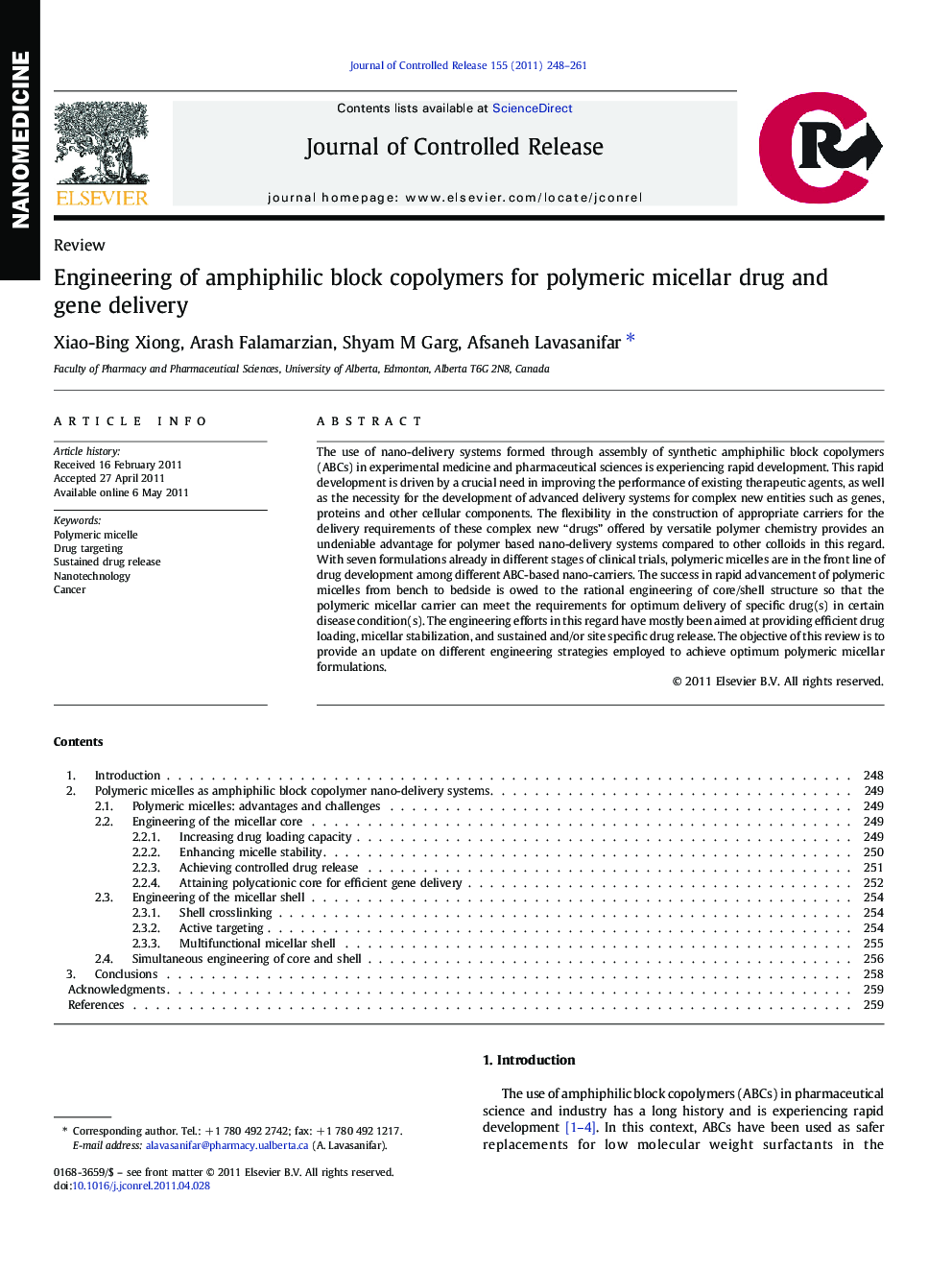| Article ID | Journal | Published Year | Pages | File Type |
|---|---|---|---|---|
| 1424735 | Journal of Controlled Release | 2011 | 14 Pages |
The use of nano-delivery systems formed through assembly of synthetic amphiphilic block copolymers (ABCs) in experimental medicine and pharmaceutical sciences is experiencing rapid development. This rapid development is driven by a crucial need in improving the performance of existing therapeutic agents, as well as the necessity for the development of advanced delivery systems for complex new entities such as genes, proteins and other cellular components. The flexibility in the construction of appropriate carriers for the delivery requirements of these complex new “drugs” offered by versatile polymer chemistry provides an undeniable advantage for polymer based nano-delivery systems compared to other colloids in this regard. With seven formulations already in different stages of clinical trials, polymeric micelles are in the front line of drug development among different ABC-based nano-carriers. The success in rapid advancement of polymeric micelles from bench to bedside is owed to the rational engineering of core/shell structure so that the polymeric micellar carrier can meet the requirements for optimum delivery of specific drug(s) in certain disease condition(s). The engineering efforts in this regard have mostly been aimed at providing efficient drug loading, micellar stabilization, and sustained and/or site specific drug release. The objective of this review is to provide an update on different engineering strategies employed to achieve optimum polymeric micellar formulations.
Graphical abstractEngineering poly(ethylene oxide)-block–poly(ε-capralactone) micelles for targeted delivery of doxorubicin and siRNA to cancer cells.Figure optionsDownload full-size imageDownload as PowerPoint slide
